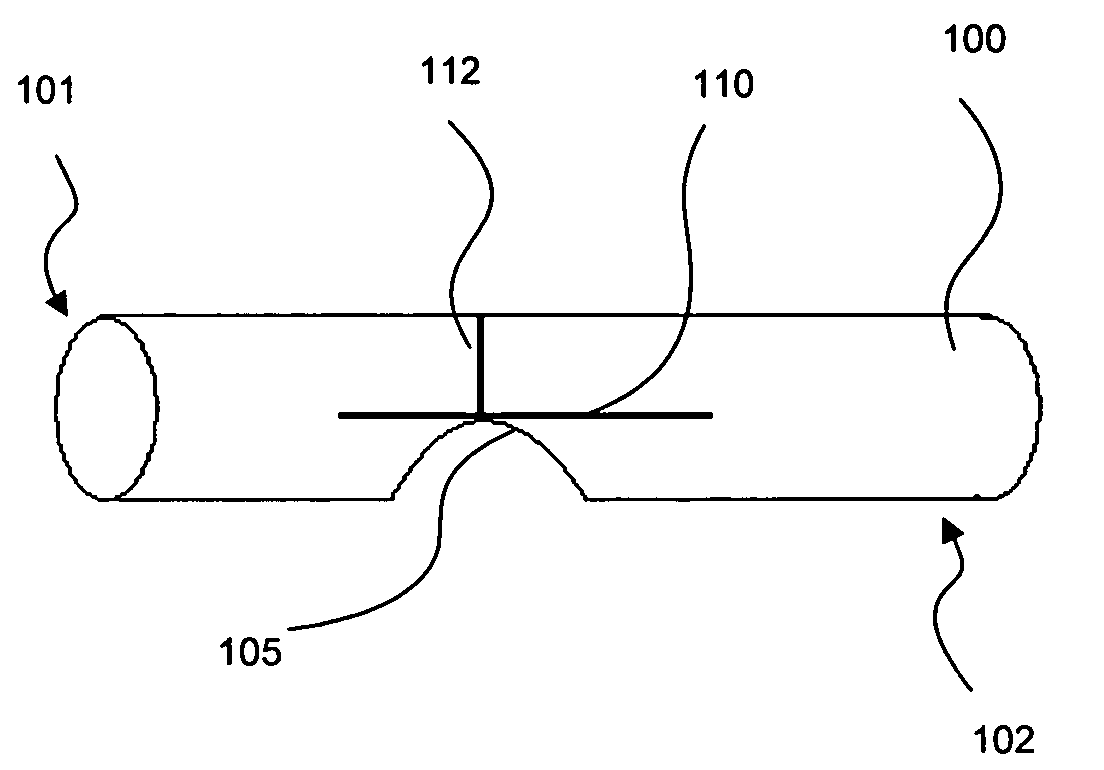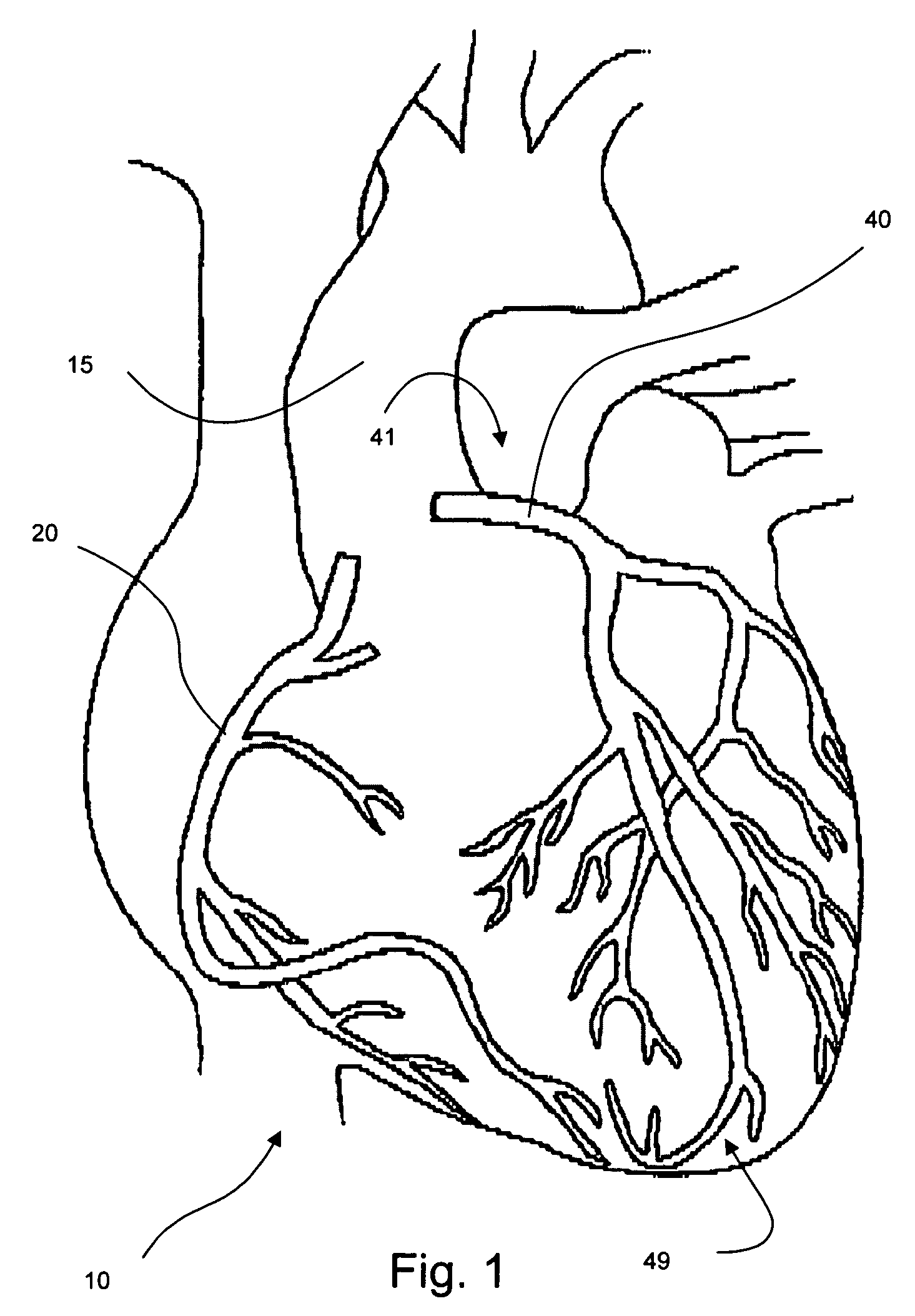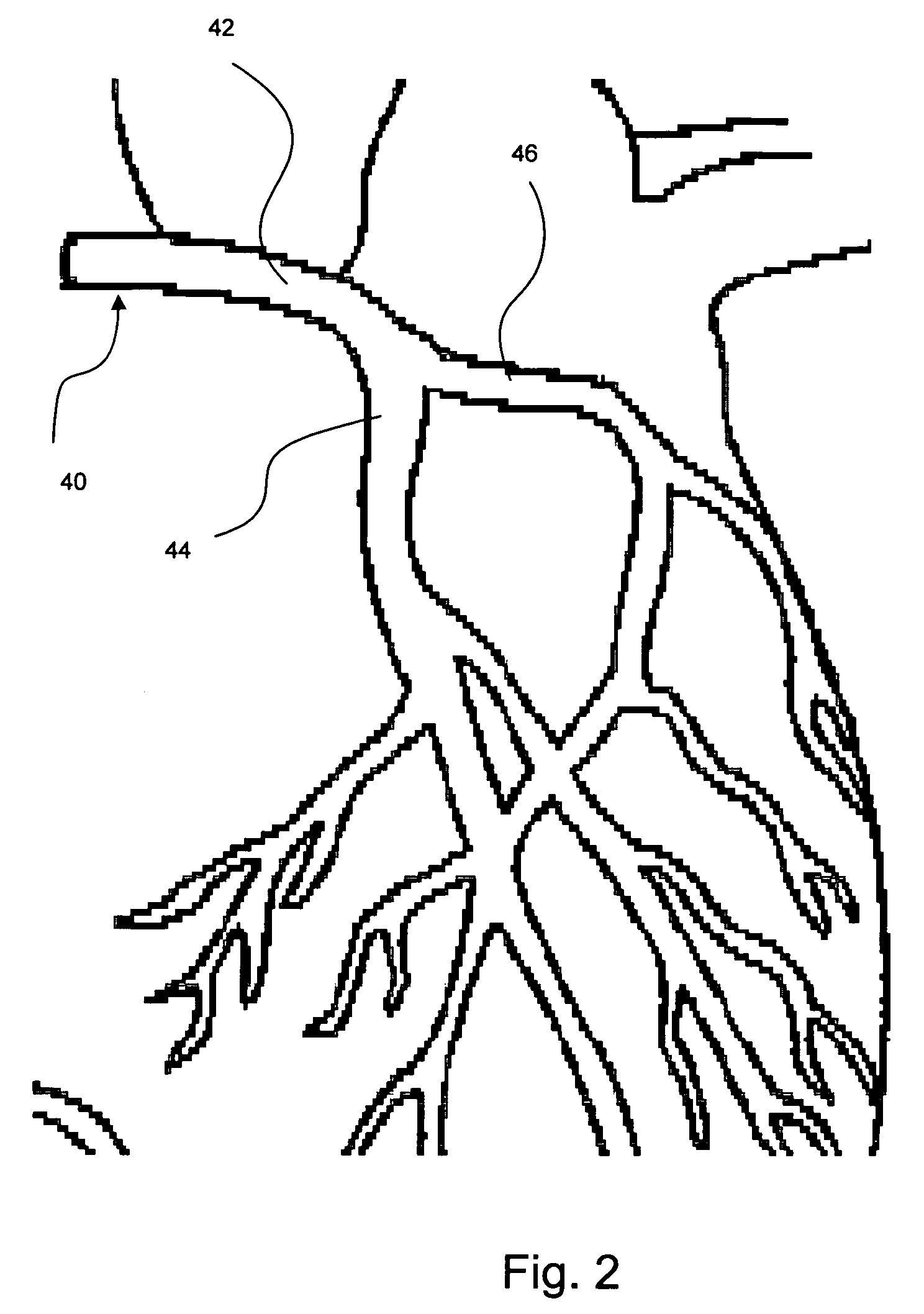Coronary stent
a technology of coronary artery and stent, which is applied in the field of implantable coronary artery stent, can solve the problems of damage insufficient blood flow to the heart tissue, and partial or complete blockage of the coronary artery,
- Summary
- Abstract
- Description
- Claims
- Application Information
AI Technical Summary
Benefits of technology
Problems solved by technology
Method used
Image
Examples
Embodiment Construction
[0045]The description below will discuss various medical conditions and how a stent may be used to aid in the treatment these medical conditions. It is noted that the methods and apparatus disclosed are not limited to the treatment of the medical conditions disclosed but may be used to treat other medical conditions where appropriate.
[0046]Looking first at FIG. 1, an embodiment of a heart 10 is depicted. The heart 10 is fed by a right coronary artery 20 that branches out and provides blood to a portion of the heart. A left coronary artery 40 is also shown and also branches out and provides blood to a portion of the heart. As can be appreciated, a blockage at the beginning or proximal end 41 of the left coronary artery 40 would affect the flow of blood to all points downstream while a blockage at the distal end 49 of the left coronary artery 40 might have little or no discernable effect on the viability of the heart 10.
[0047]Turning to FIG. 2, the left coronary artery 40 is shown in ...
PUM
 Login to View More
Login to View More Abstract
Description
Claims
Application Information
 Login to View More
Login to View More - R&D
- Intellectual Property
- Life Sciences
- Materials
- Tech Scout
- Unparalleled Data Quality
- Higher Quality Content
- 60% Fewer Hallucinations
Browse by: Latest US Patents, China's latest patents, Technical Efficacy Thesaurus, Application Domain, Technology Topic, Popular Technical Reports.
© 2025 PatSnap. All rights reserved.Legal|Privacy policy|Modern Slavery Act Transparency Statement|Sitemap|About US| Contact US: help@patsnap.com



